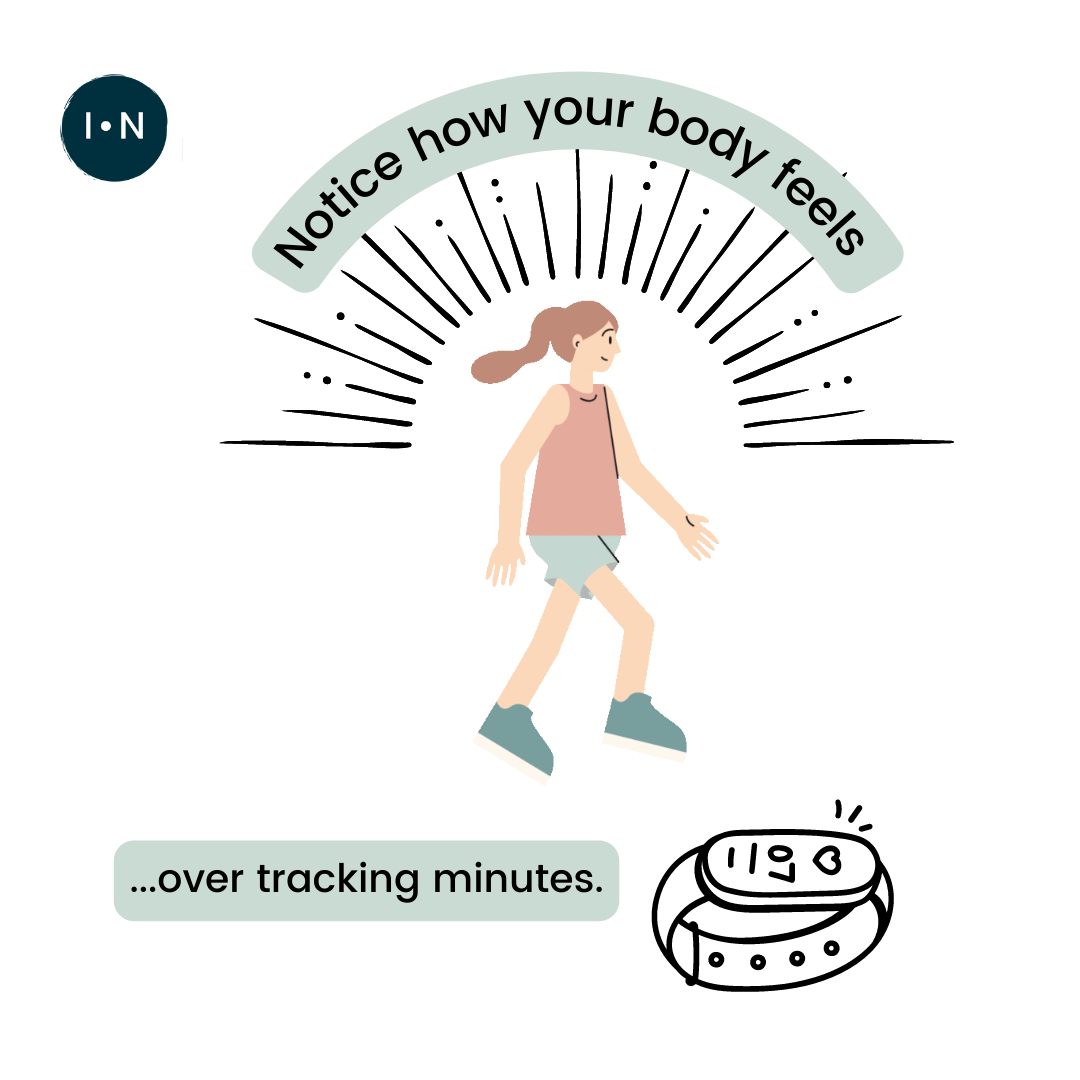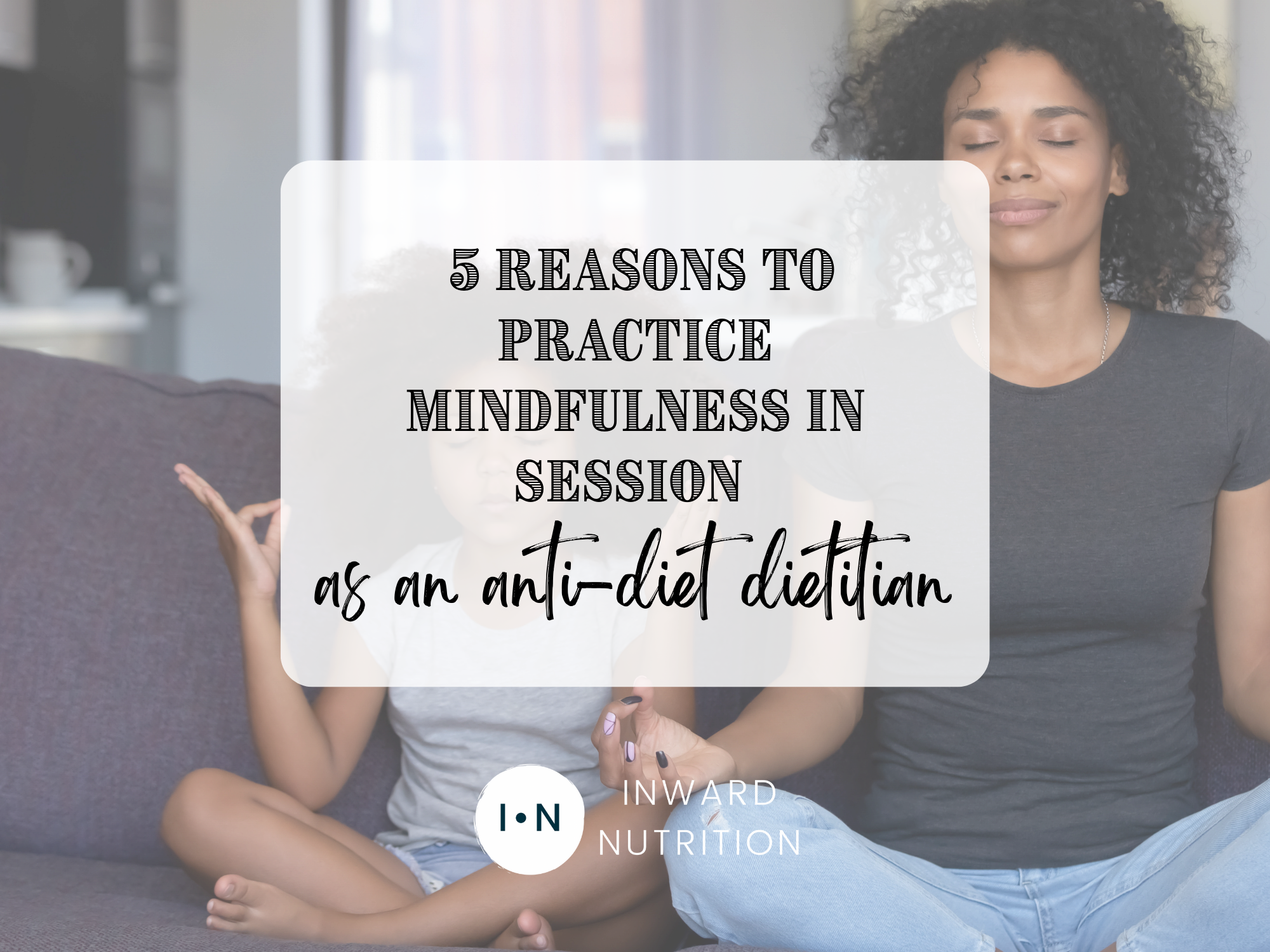What to Pay Attention to Everyday to Improve Your Relationship with Food
The world of dieting is full of concrete data: pounds lost, miles run, calories consumed. For many of us, numbers like these can be comforting. They are proof that we are following the rules.
But now that you are off the diet train, what can you track? How can you feel like you are making progress?
Focus on qualitative data instead of quantitative data.
What is qualitative data? It’s describing the quality or characteristics of your eating behaviors. It’s the what, why and how. Instead of using numbers, you’re using words.
There are so many aspects of your eating that you can pay attention to now. Here are a few—
Notice when you have a craving
A food craving could be:
a desire for a certain texture or flavor of food - the result is satisfaction
an urge to eat something for comfort or distraction - the result is often overeating or guilt
There are times, perhaps, when these two types of cravings may overlap. For example, when you’re feeling sad and specifically choose cookie dough ice cream. In these situations, notice which type of craving is most predominant.
Now, I know what your mind might be doing right now. You’re labeling the urge-craving as “bad” and the desire-craving as “good.” I get it. Our brains like to categorize in this way. Let’s not label them as “good” and “bad.” They are just different.
How can you tell the difference between these two types of cravings? Here are some questions if you aren’t sure:
What emotion are you feeling? If you’re feeling an uncomfortable emotion, it’s probably an urge-craving because we like to avoid discomfort. If you’re stressed and in fight-or-flight mode, your system is not concerned about pleasure like it is when you have a desire-craving.
How much urgency are you feeling? If it’s a desire-craving, you’re willing to spend the time making the food just right to meet that craving. If it’s an urge craving, you don’t care what the food is, you just want to eat.
What is your mind telling you? If it’s an urge, you may think, “This is my chance to eat those Oreos while nobody is around. I’ll only have a couple.” With urges, thoughts include should or should-nots and are rarely focused on the quality of the food.
Whereas if it’s a desire, you may think, “The cream inside the Oreo is my favorite. Mmm, it sounds good, especially with milk to dip it in.” Your thinking is more focused on how to have the most pleasurable experience.
How connected are you to your body? If you haven’t been paying attention to your body, you’re less likely to be experiencing a desire-craving because those messages come from your body. Consider the sensation of feeling slightly thirsty. You have to be connected to what’s happening inside (interoceptive awareness) to know that you want a drink. The same goes for craving specific foods in order to experience satisfaction.
What’s your hunger/fullness level? It’s possible to experience either type of craving when you’re hungry, full, or anywhere in between. Keep in mind, though, that interest in food decreases when we’re full. So desire-cravings are less likely when we’re full, except if you have a separate dessert stomach.
Notice your cravings - whichever type they are - with curiosity instead of judgment.
Notice when you feel guilty after eating
Instead of avoiding the feeling of guilt, explore it:
Are you guilty because you ate differently than what you’d planned or expected?
Are you feeling guilty about WHAT you ate - the amount or the type of food?
Are you feeling guilty over HOW you ate - the speed or level of mindfulness during the meal?
What was your expectation for this meal and is this realistic?
Answering these questions might reveal a food rule you are still holding on to, like exceeding a certain amount of carbohydrates at dinner. As I’ve written in a previous blog, I personally recognized some of my own food rules when I was curious about emotions during meal planning.
Or you may realize that your expectations for yourself are too high and unattainable. Instead of aiming for intuitive eating, are you actually trying to be a perfect eater?
Maybe you’re still relearning what your body needs. If you feel guilty for eating (what seems like) a lot, but you’re at a comfortably full level - you can readjust your concept of an appropriate portion. If you feel guilty for eating a certain amount and you ARE uncomfortably full, this is a good opportunity for self-compassion.
Notice when you do something differently
This is one of my ABSOLUTE FAVORITE things to talk about with clients in one-on-one sessions. Author Jenna Hollenstein calls this “progress with a little p.” She says in her book Intuitive Eating for Life:
“It's progress when you notice yourself
in the moment,
having different experiences than you did before,
responding in intentional ways,
and connecting the dots between thoughts, feelings and behaviors.”
Yes! That’s what it’s all about!
Examples of progress in Intuitive Eating:
I drove home from picking up our carryout order without eating any of it in the car!
I ate mindlessly in front of the TV last night. Instead of punishing myself, I forgave myself and moved on.
There has been a partially eaten package of Little Debbies in the pantry for the past week. In the past, it would be gone in a day!
I ordered what I actually wanted from the restaurant instead of waiting to see what others would get.
I would normally diet after X Situation happened. But now I don’t think dieting will work for me.
I experimented with a bigger breakfast and noticed I could focus better at work that day.
As you can see, there is plenty of qualitative data to pay attention to in intuitive eating. Noticing these and then reflecting WILL shift your mindset with food over time. Trust the process!
I love paying attention to these concepts with clients in one-on-one counseling sessions. If you’re interested in partnering with me on your food journey, set up a call to learn more!
Want to learn more about how to pay attention and be mindful? Check out these other blog posts—







